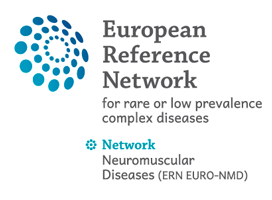OJRD, volume 19, issue 408, pages
The European reference network for metabolic diseases (MetabERN) clinical pathway recommendations for Pompe disease (acid maltase deficiency, glycogen storage disease type II)
Authors:
Giancarlo Parenti, Simona Fecarotta, Marianna Alagia, Federica Attaianese, Alessandra Verde, Antonietta Tarallo, Vincenza Gragnaniello, Athanasia Ziagaki, Maria Jose’ Guimaraes, Patricio Aguiar, Andreas Hahn, Olga Azevedo, Maria Alice Donati, Beata Kiec-Wilk, Maurizio Scarpa, Nadine A. M. E. van der Beek, Mireja Del Toro Riera, Dominique P. Germain, Hidde Huidekoper, Johanna M. P. van den Hout, Ans T. van der Ploeg & and the MetabERN Subnetwork for Lysosomal Disorders
Clinical pathway recommendations (CPR) are based on existing guidelines and deliver a short overview on how to deal with a specific diagnosis, resulting therapy and follow‑up. In this paper we propose a methodology for developing CPRs for Pompe disease, a metabolic myopathy caused by deficiency of lysosomal acid alpha‑glucosidase.
The CPR document was developed within the activities of the MetabERN, a non‑profit European Reference Network for Metabolic Diseases established by the European Union. A working group was selected among members of the MetabERN lysosomal storage disease subnetwork, with specific expertise in the care of Pompe disease, and patient support group representatives. The working strategy was based on a systematic literature search to develop a database, followed by quality assessment of the studies selected from the literature, and by the devel‑
opment of the CPR document according to a matrix provided by MetabERN. Quality assessment of the literature and collection of citations was conducted according to the AGREE II criteria and Grading of Recommendations, Assessment, Development and Evaluation methodology. General aspects were addressed in the document, including pathophysiology, genetics, frequency, classification, manifestations and clinical approach, laboratory diagnosis and multidisciplinary evaluation, therapy and supportive measures, follow‑up, monitoring, and pregnancy. The CPR document that was developed was intended to be a concise and easy‑to‑use tool for standardization of care for patients among the healthcare providers that are members of the network or are involved in the care for Pompe
disease patients.

